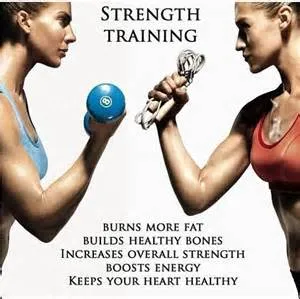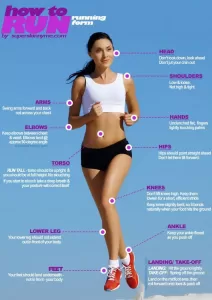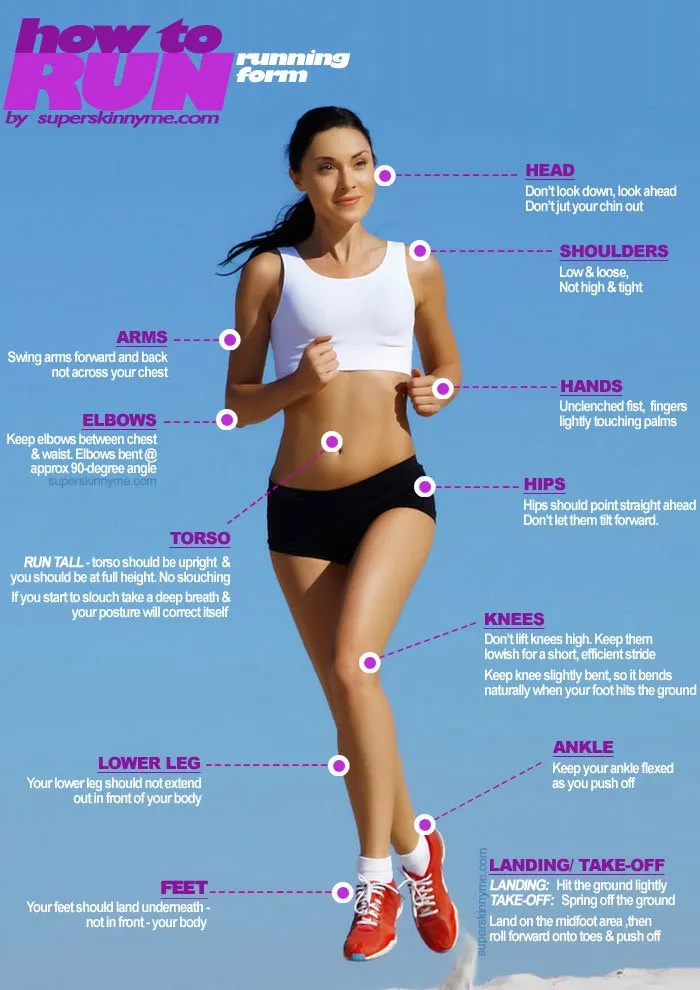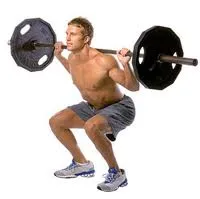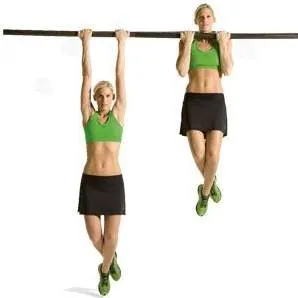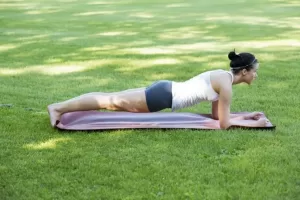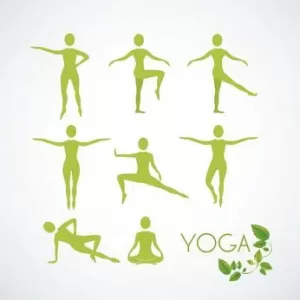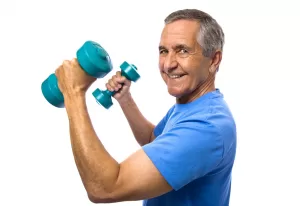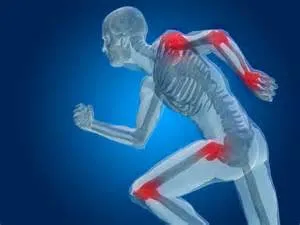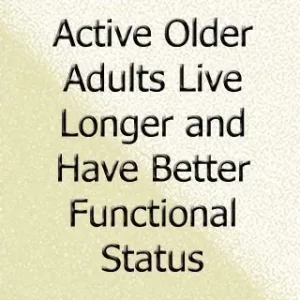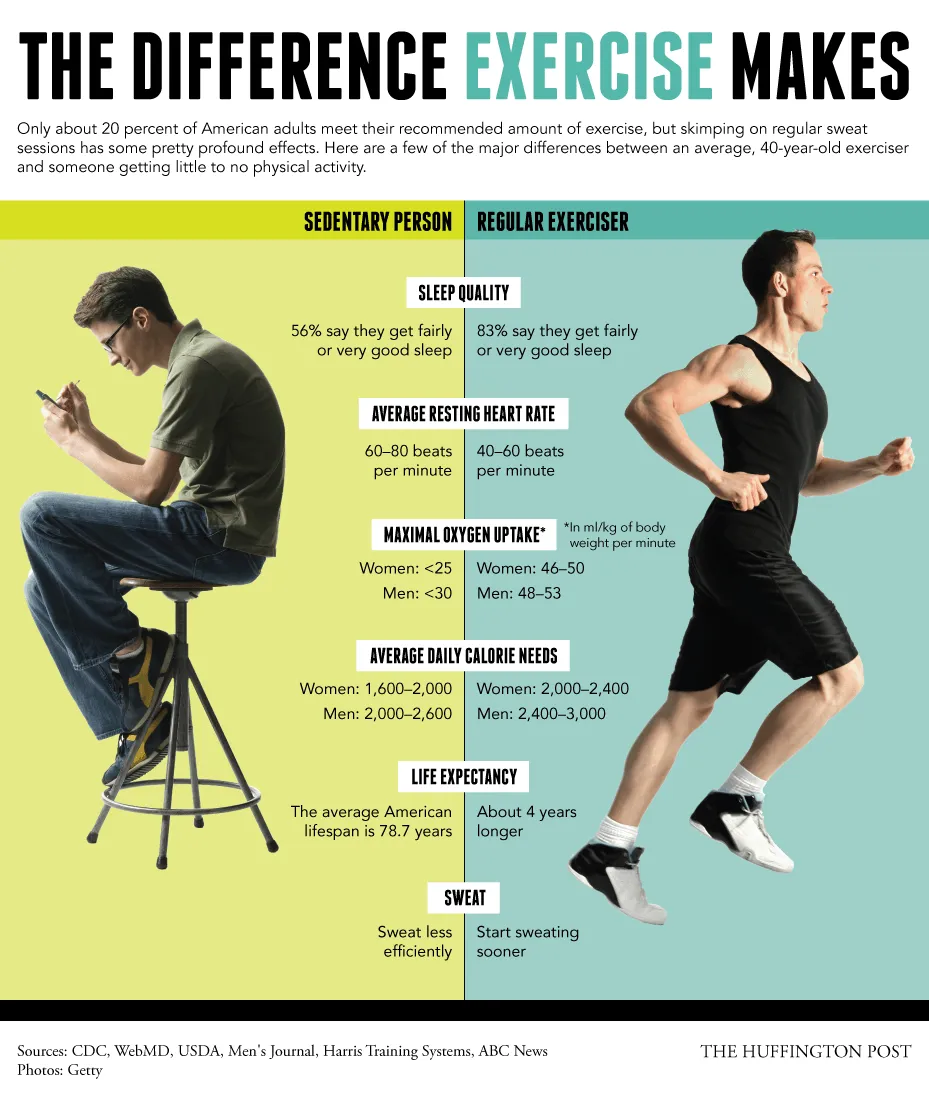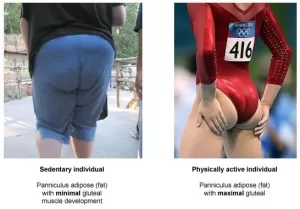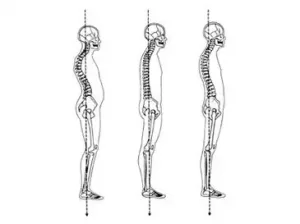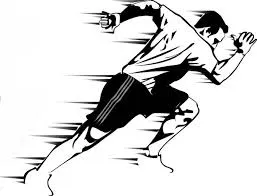https://www.huffingtonpost.in/entry/if-soda-commercials-were-honest_us_56b8f3b4e4b04f9b57daa6fd
Author: admin
I can’t do both!!!!!
Here’s a really great piece that simply explains the benefits of training both strength and cardio when you hit the gym and why you should be including strength work in your routines; best of all – it’s backed up by science!!
(just copy & paste the link and let us know your comments)
Bench, Bench, Bench
An exercise program that is too chest dominant can create a muscle imbalance that could be responsible for a rotator cuff injury that limits the function of the shoulder. In addition to bringing a load directly down on the chest while the scapulae are being held in place by a bench puts a tremendous amount of force on the anterior capsule of the shoulder, sitting at a computer for hours a day without the best posture can already place your shoulder and chest muscles in a shortened, weakened position that greatly enhances the risk of injury.
Except for competitive athletes, the amount of weight you can bench press is irrelevant to improving his quality of life as you age. If you only have a limited amount of time, the best way to get results is to make exercise as efficient and effective as possible, using movements that involve a number of muscles simultaneously. The body burns 5 calories to consume 1 litre of oxygen; therefore, the more muscles used during a workout, the more oxygen used and the more calories are expended. The following exercises can help increase lean muscle mass, improve definition and burn calories, and should be a part of every guy’s exercise program.
So when training, you should make sure you use the following exercises in your weekly workouts.
Squats and Deadlifts
The only difference between these two exercises is where the resistance is placed: on the body for a squat or picking a weight from the floor for a deadlift. Either way, squatting with resistance involves a lot of muscle mass, which means burning more calories during the exercise. An additional benefit of squatting or deadlifting is that each exercise requires you to maintain a strong, stable spine using abdominal bracing to strengthen the core muscles that help with the appearance of a flat stomach. It’s important to squat with good form so before you step under a bar or pull from the floor, start by learning the movement with goblet squats. A goblet squat involves holding a dumbbell or kettlebell in front of the chest during the exercise and can be a safe, effective way to load the hips while learning proper form and technique.
Romanian Deadlift (RDL)
The RDL involves hip flexion and extension while holding a resistance in front of the body. Proper form means the knees are slightly flexed while the spine remains long and straight throughout the range of motion. The movement should be from the hips, not the lumbar spine, and when done properly can strengthen the glutes, hamstring and adductor muscles responsible for extending the hip. Like the squat or deadlift, the RDL uses the stabilising muscles of the core, which means you’ll be working on a flat stomach while developing noticeable, well-defined glutes.
Chin-ups or Pull-ups
Whether in the gym or outside in a park almost nothing feels more primal than grabbing on to a pull-up bar and knocking out a few reps. The primary difference between a chin-up and a pull-up is hand position; the hands are palms-up during a chip-up and palms down during a pull-up. A palms-up position uses more of the biceps and places less strain on the elbow; it also puts the shoulder in an externally rotated position, which counteracts the effects of being at a computer all day. Either way, chin-ups or pull-ups with your own bodyweight (even modified or assisted) are a great way to strengthen the upper back and give you an overall more muscular appearance.
Bent-over Barbell Rows
In his research on the spine, Canadian professor Stuart McGill, Ph.D., noted that in addition to strengthening the muscles of the upper back, the barbell bent-over row develops important core strength to enhance spinal stability. The bent-over row can improve strength and definition of the back, while also strengthening the deep core muscles that can help give the appearance of a flatter stomach.
Standing Shoulder or Military Press
The shoulders sit on top of the spine, which sits on top of the hips. While seated shoulder presses are effective for developing shoulder strength they do not engage the hip and core muscles (and remember using more muscles = burning more calories). Standing shoulder presses require a solid, stable platform using the hips and deep stabilisers of the spine, making this exercise effective at developing core strength while improving the size and definition of the shoulder muscles.
Push-up
Everyone’s favorites…push-ups can be the most effective way to strengthen your chest and require no equipment. While your body is lying on a bench during a chest press, push-ups require the hip and core muscles to create the stability for the shoulders and arms to move through a complete range of motion, making it another exercise that does multiple things at once. While you can lift more weight lying on a bench or sitting in a machine, neither will use the muscles that help flatten your abs like the push-up does. The good news is that when performed to fatigue, push-ups can initiate a hormonal response that leads to muscle growth, meaning that you don’t need to risk injury with a ton of weight to increase mass and definition.
Planks and Side Planks
A number of the exercises on this list use the deep core stabilisers as an integral part of the movement, something the normal plank is great for. Side planks, however, provide many of the same benefits as a traditional plank but balancing on one arm requires more strength from the shoulder. In addition, the side plank engages both the internal and external obliques, which, when strengthened together, can create a stronger mid-section.
Yoga
While lifting weights is AWESOME, you can’t forget to add flexibility and mobility training and yoga provides both. The first yoga class you take will be a challenge of moving the body in different directions, which helps improve overall flexibility and coordination. Yoga can help reduce both physical stress from exercise and mental stress from work and life demands.
Too Old to be Told?
How to Slow Down Age Related Muscle Loss
Research has found that progressive strength training can counteract age related muscular atrophy.
Sarcopenia or age related muscular atrophy (loss) can start as early as age 20. The rate of sarcopenia accelerates as we age; and from 50 to 70 years of age, we lose 30 percent of our muscle strength. Maintaining muscle strength as we age is extremely important to be able to maintain mobility as well as manage to live an independent life and carry out daily tasks independently. As we lose muscle, we lose the ability to perform tasks where strength is required; pulling, pushing, lifting etc. Our skeleton comes under more stress as it has to take more of the load, which in turn can affect our posture; our balance, agility and co-ordination all reduce, as we have less strength to control movement; and our metabolic rate will slow down (and body fat increase).
The studies looked at the extent of the effects which can be gained as a result of strength training in older people and which intensities of exercise are beneficial as well as possible in individuals over the age of 60 years. The researchers discovered that regular strength training improved muscle strength, lessened muscular atrophy, and showed that bones and tendons adapt too. These successes consequently had a preventative effect with regards to preventing injuries and falls.
Higher intensities of training produced better effects compared to low and moderate intensities. To be able to increase muscle mass, a 60 to 85 percent intensity of the one-repetition-maximum is necessary. To be able to increase quickly available muscle force, greater intensities (85 percent or more) are necessary. The ideal amount of exercise for healthy older people is 3 to 4 training sessions each week.
Look at some of the benefits:
Osteoporosis affects all of us as we age, females more rapidly than males; resistance training can help slow the effects down as it helps increase bone density, therefore reducing the chances of breaking a bone as a result of a fall.
Heart: the heart is a muscle and, like all the other muscles in the body can respond to exercise by becoming stronger and more efficient. The result? The heart can continue to pump blood around more efficiently under less strain. Exercise can also help regulate the lipids in the blood which can help reduce the risks of heart disease.
Mood: by exercising the body responds by producing ‘happy’ hormones that can improve mood and energy levels. This can lead to a more active and independent lifestyle.
Metabolism: by increasing or maintaining muscle mass the body will burn more calories, therefore our ability to control our weight and body fat is better. This will also help get rid of those wobbly bits under the arms!!!
Arthritis: stronger more functional muscles will support the skeleton much better and therefore reduce the stress on the joints; the muscles do the work absorbing the forces involved.
Back pain: how many of us would love to be pain free? Strong healthy muscles will do the work, improving posture and getting you standing up straighter.
So no matter how old you are, there are lots of reasons to strength train as it has so many benefits for improving your health. Many of of clients are over 30 and love the differences they have seen as a result of training with us on a regular basis; when are you starting?
Does my Bum look big in this? No. Well it should do!!
How Muscle Atrophy Affects Posture & Performance
More people are sitting at desks today than ever before; and as assumed, these same individuals leave work, drive home (sitting) and sit in front of a TV or computer in their homes. More people are engaged in a sedentary lifestyle that is composed of prolonged static positions (seated or standing); and spend less time moving or exercising due to advances in technology.
Is it possible that a sedentary lifestyle, absent of purposeful loaded activity or exercise, can cause atrophy of muscles? Take the example of a broken bone. Once fractured and encased in a splint or cast for several weeks (depending on the type of fracture and bone involved), the muscles surrounding that bone are no longer active. They are not active because the “lever system” that they are associated with is impaired. Therefore, without proper muscle firing or use, the muscles lose tonus, weaken, and decrease in neural response. This can lead to muscle atrophy and reduction in functional movement.
Sitting and Lower Back Pain
With most sedentary individuals, lower back pain is a common association with inactivity and prolonged sitting. Lower back pain that is categorised as mechanical and therefore not an injury, it will typically involve musculoskeletal factors that may be influenced by lifestyle, activity, and body composition. Other types of low back pain are structurally specific to the spine and involve conditions such as arthritis, disc hernia and degeneration. In mechanical low back pain, muscular length-tension relationships change over time in relation to the stress put on the body. For example, in the seated position, the hip flexors are in a constant shortened state and the knee flexors—primarily the gastrocnemius remains shortened. To exacerbate the effects of prolonged sitting, poor posture such as slouching, shoulder protraction, and cervical flexion, cause the erectors of the back to become overactive and fatigue. The gluteals ( your bum muscles) remain inactive in a seated position. Sitting for long periods can lead to the gluteal muscles atrophying through constant pressure and disuse. Movements that require the gluteal muscles become more difficult (such as climbing stairs or rising from a seated position); therefore, extra stress is put on the lumbar spine leading to low back pain.
Function & Characteristics of the Gluteals
The gluteals muscles are involved in extending and outwardly rotating the hip, and extending the trunk. They provide the human body incredible leverage and sets our species apart from other primates (upright versus four legged). Lower body exercises, such as squats, deadlifts, lunges, and good mornings, strengthen the gluteal muscles. These exercises focus on glute strengthening because there is a muscle action demand that corresponds with the muscle’s responsibility.
In a seated position, there is no demand for the muscles to act (unloaded inactivity); therefore, over the course of time, the gluteals will decrease in neural output. If there is a decrease in the “call time” of a muscle, surrounding muscles will enact to complete a movement causing muscular imbalances and stress on joints. In the case of functional performance, the lumbar spine receives the brute of this compensatory pattern.
Typically, when there is a lack of gluteal function, there is a visible lack of gluteal development in an individual. The gluteal muscles are only partially responsible for giving the buttocks their characteristic shape. The subcutaneous fat that also contributes to the “roundness” of the buttocks is called the panniculus adipose. If the gluteus musculature is atrophied and subsequently “absent” from providing shape, then the overlying panniculus adipose is responsible for the “sagging butt” appearance. This appearance is no illusion and gives credible evidence that the glutes do not function properly – by means of weakness and neural deviation.
How can this affect posture?
Sway back posture (1st image on the left) The sway back posture places excessive strain on the low lumbar or lower spine which becomes problematic with extension. This is often seen in those that are seated for long periods of time, that exhibit pain upon standing still. This is because the line of gravity drops behind the hip joint producing passive hip extension via body weight. This passive hip extension renders active extension from the gluteus maximus unnecessary and it ‘switches off’; the hamstring muscles, however, maintain activation to control postural sway.
Gluteal atrophy is often seen in those with sway back posture, and this can be a result of the “flattening” of the lumbar spine causing compression or herniation of the vertebra discs. Cosmetically, it is unsightly for those desiring a more “rounded” rear. Flat back posture (middle image) is somewhat similar to sway back posture. It is characterised as a malformation in which the individual has a decreased curve in the low back region.
Optimal Performance & Function Affected
Optimal posture allows the body to move more efficiently, fatigue less easily, and place less stress on the joints. Optimal posture will assist in the prevention of overtraining, muscle imbalances, and decreased performance. In the world of ‘average Joe’s’, optimal posture will decrease the likelihood of cumulative injury due to static positions. Typically, when an injury presents itself in a sedentary individual, it is the symptom of a problem—and not directly related to the site of pain. Posture helps determine which muscles are strong and weak by lengthening or shortening certain muscles. There is an optimum length at which the muscle is capable of developing maximal tension.
In order to reverse the degeneration of the gluteal muscles, loaded activity should be introduced regularly. Immobilisation studies (study used bed rest) in humans suggest that most of lost muscle and strength can be regained with appropriate resistance training several weeks after a period of disuse. From a functional performance standpoint, a basic program to isolate the gluteals with specific exercises and then integrate them into functional movements is key.
Poor lifting habits are born through mechanical disadvantages and invalid instruction. Both can be a result of one or the other. For instance, most indoor cyclists demonstrate enormous quadriceps development and hip flexor action. This popular fitness activity demands resisted knee flexion in a high stressful hip flexion position. The seated position also exacerbates the inactivity of the gluteals during a class, and reinforces the degeneration of this muscle.
Most participants will attest that a typical indoor cycling class also involves simulated hill jumps, whereas the buttocks are raised off the seat, which may involve the gluteals to some degree. Even so, the neural programming shuts off the gluteals simply because it cannot “undo” itself to fulfill an activity that supposedly involves its potential action in such a short time period.
Research shows that an emphasis on contraction of the glutes aids in stabilising the pelvis and ensures a safe and effective movement to occur. Exercises that assist this occurrence are: deadlifts, Romanian deadlifts, squats, split squats, stationary lunges, and step-ups. However, most typical exercisers resort to leg extensions, seated leg curls, leg presses, and adductors/abductors; furthering the “shut down” process.
Injury
It has been shown that injuries or pain also contribute to gluteal dysfunction or atrophy. In one study, patients who had suffered ankle sprains were shown to have a reduced activation level of the glute maximus. This may be caused by the damage to the proprioceptive feedback mechanism via lateral ankle sprain. These findings confirm that changes in muscle firing patterns, particularly by the gluteus maximus, can lead to muscle inhibition and/or atrophy. This compromise could result in a compensation of the lower back. A situation where an injury has likely occurred and has altered the normal function of the human body (gait, running, sitting, getting in or out of a car, etc), should emphasise the importance of corrective exercise and rehabilitation.
Most individuals that do not receive proper rehabilitation for such injuries like ankle sprains develop scar tissue and immobilisation of the ankle joint that further exacerbates atrophy of the gluteals. Most basketball players that experience low back pain have a history of ankle sprains that have altered the function of the glutes, which become more important for the taller athlete because of the longer limbs creating a “longer lever” stress on the back.
Summary
The importance of gluteal function is imperative to proper posture and human performance. Without optimal function from the glutes, sedentary individuals may exhibit low back pain and other associated injuries. In severe cases, the gluteal muscles fail to absorb the shock impact in the load transfer during walking, which studies have shown to lead to some forms of hip osteoarthritis.
What types of modifications to daily lifestyle can sedentary people begin to do to combat the effects of gluteal atrophy?
Move more – According to Stuart McGill, PhD in his book, “Low Back Disorders”, moving and “fidgeting” while in a seated position breaks the constant pressure placed on the body by gravity. Constantly, changing seated or standing positions alleviates low back strain and repositions the glutes.
Walk – The office worker seldom has the chance to exercise during the day. Adding some “purposeful” movement, such as fast walking, during a lunch break is important to circulating pooling blood from the lower body, burn calories, and lengthens muscles.
Take stairs – Sounds simple, yet, the act of extending the hip under the load of the body will enhance glute performance – provided it is performed without the compensatory assistance of the lumbar spine.
Stretch more – Along with moving and walking, standing from a seated position regularly allows the vertebral discs to decompress and lengthens muscles that are otherwise in the process of shortening.
Humans are meant to be upright as a species and it is the function of the gluteal muscles that allow that. As the sedentary become more and more inclined to sit, the more obvious it becomes to see the damage caused. With small modifications and changes made throughout one’s day, it is a battle that can be one in small increments through purposeful activity, and properly loaded exercises.
Are you THE BIGGEST LOSER?
Here are notes from a great article from the team at Precision Nutrition looking at some of the effects of rapid weight loss and not developing a longer term plan.
Research Review:
The Biggest Loser study Is it impossible to sustain weight loss in the long term? By Helen Kollias
What happens to the body weights and metabolisms of The Biggest Loser contestants after they appear on the show? Why? And what does this mean for everyone else who wants to lose weight and keep it off?
Nine in 10 people want to lose weight. So it’s no wonder the NBC reality show The Biggest Loser has become wildly popular.
-this-happened-to-you montages set to emotive music.
And successful contestants who’ve lost significant weight — sometimes hundreds of pounds Competitors running on treadmills with tears streaming down their faces.
Trainers screaming motivational slogans… or just screaming.
How — holding their “before” jeans next to their new bodies.
The Biggest Loser is pure TV gold.
But is it gold for the contestants themselves? A just-released study — shedding not-so flattering light on what happens after the show — suggests not.
Here’s the media narrative of what happened:
- The Biggest Loser contestants regain most (or all) of the weight once cameras get turned off.
- This is caused by and/or leads to damaged metabolisms, psychological trauma, and shame.
- Trying to lose weight and keep it off is hopeless.
But is this story true?
What does the study prove? And is it really impossible to sustain weight loss?
Let’s dig a little deeper.
Research questions:
What happens to the body weights and metabolisms of The Biggest Loser contestants in the years after they appear on the show? Why? What does this mean for regular folks who want to lose weight and keep it off?
Fothergill E, Guo J, Howard L, Kerns JC, Knuth ND, Brychta R, Chen KY, Skarulis MC, Walter M, Walter PJ, Hall KD. Persistent metabolic adaptation 6 years after “The Biggest Loser” competition. Obesity (Silver Spring). 2016 May 2. doi: 10.1002/oby.21538.
To explore these questions, this study looked at three key indicators in 14 men and women who participated in season 8 of The Biggest Loser (2009):
- Body composition is someone’s ratio of fat mass to lean mass (muscle, bone, etc.). For good health and physical function, we want less fat mass and more lean mass in general.
- Resting metabolic rate (RMR) is the number of calories a resting body burns in a day, without activity. Weight loss aside, smaller bodies require less energy to maintain and should have lower RMRs. Bigger bodies require more energy and should have higher RMRs.
- Leptin levels: Leptin is a hormone that, among other things, gets released after we eat, suppressing our appetite and increasing energy expenditure to help keep our calories in/calories out balanced and our weight stable. In general, the more fat cells in your body, the higher your leptin. Since leptin helps regulate RMR, the two should rise and fall together.
Now, in case you’re not caught up on your reality TV watching, here are a few important things to know.
- When the filming starts, The Biggest Loser participants are morbidly obese (exceeding their ideal weight by 100 pounds or more).
- Over the course of 30 weeks, they’re supervised and coached by the show’s trainers and doctors.
- Contestants eat a diet restricted to about 1200 calories per day.
- Contestants do at least of 90 minutes of intense exercise per day, 6 days a week.
- After filming the show, contestants return to “real life” without continued supervision or guidance as to how to maintain their nutrition and exercise regimen.
Methods & Initial assessment
Before their first appearance on the show in 2009, contestants went through a battery of tests that assessed things like:
- RMR (in other words, basic metabolic activity of being alive)
- physical activity expenditure (in other words, exercise)
- total energy expenditure (how much energy people were expending in a day through metabolism and physical activity together); and
- blood chemistry.
Follow up
In 2015, six years after their run on the show, subjects returned to the laboratory for a complete follow-up. Two weeks before the study officially started, participants weighed themselves on a special digital scale that transmitted their data to the researchers.
This early start helped ensure that people didn’t try to change their weight before the study began, which would skew the results. Once in the lab, researchers again measured the subjects’ RMR, total energy expenditure, and physical activity expenditure. They also performed bloodwork. They then compared the results of their 2015 testing and their 2009 testing. Here are the results…
Results: Weight
Average weight before filming The Biggest Loser: 328 lb.
Average weight after 30 weeks on The Biggest Loser: 199 lb.
Average weight six years after final on camera weigh-in: 290 lb.
This means that, on average, participants regained 70 percent of the weight they’d lost. (Although they did keep off 30 percent of it.)
Resting metabolic rate
Average RMR before filming: 2,607 kcal burned / day.
Average RMR after 30 weeks on the show: 1,996 kcal burned / day.
Average RMR six years after final weigh-in: 1,903 kcal burned / day.
Surprisingly, despite their weight regain, participants were burning 700 fewer calories per day at rest vs. when they started the show. This is about 500 fewer calories than we’d expect them to burn based on predictive equations that take into account their body weight.
Lean body mass (an indication of muscle mass)
Average lean body mass before filming: 167 lb.
Average lean body mass after 30 weeks on the show: 142 lb.
Average lean body mass six years after final weigh-in: 155 lb.
Participants lost 25 lbs of lean mass during the filming of the show. They did end up gaining about 13 lbs of it back. However, that didn’t help to elevate their RMR, as we might have expected.
Leptin
Average leptin before filming: 41.14 ng/mL
Average leptin after 30 weeks on the show: 2.56 ng/mL
Average leptin six years after final weigh in: 27.68 ng/mL
As you’d expect, participants’ leptin levels went down when fat decreased, and went up again when fat came back.
So, why did they regain the weight?
That’s a complicated question. But the study’s findings give us big clues, and new discoveries for our understanding of metabolism. Many people assume that weight loss — and sustaining weight loss — is purely psychological. If you don’t have the mental strength and willpower to pass on the chili cheese fries, then you’re essentially choosing to gain back the weight, right?
But the Biggest Loser data illuminate the important physiological roadblocks contestants face.
Metabolic adaptation
We already know that when you lose weight, your metabolism slows. This is called metabolic adaptation, and it’s normal.
Metabolic adaptation is a natural defense mechanism against starvation. When you’re dieting, at a certain point, your body will send up a red flag.
Starvation alert! There’s not enough food to go around! Hold onto the fat reserves!
At that point, your RMR slows.
Metabolic adaptation can make things more complicated (and frustrating) for dieters who hope to continue or maintain their weight loss. Once their body’s red flag goes up, calorie restriction no longer has the same effect it did at the beginning of their diet. Suddenly, they need to cut more calories just to maintain the same weight. While this is sometimes framed as metabolic damage, it’s really just your body’s way of trying to keep you alive and well.
What was interesting about this study? It showed that participants’ RMR stayed low despite:
- Weight regain: Even though participants were larger six years later, they weren’t burning more calories at rest.
- Muscle maintenance: Theoretically, the more muscle you have, the more calories you burn at rest. But it’s not helping these participants’ RMR.
- Time passing: We used to think that metabolic adaptation may reverse with time, and it might. But here we see that even six years isn’t enough.
In the end, as you can see in the following graph, participants’ metabolisms were just as low after six years (and after regaining almost 100 pounds) vs. the end of the show, when they were their lightest.
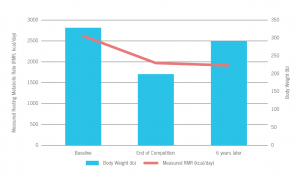
Leptin
As expected, The Biggest Loser participants experienced a huge drop in leptin when they lost weight in 2009. When they regained weight, leptin rose accordingly. But there are two sticking points here:
- “Normal” leptin doesn’t mean it’s easy to control your appetite. Pre-Biggest Loser, these folks were used to eating a certain amount; now they need less to stay smaller. Of course, if they (unconsciously) went back to those same amounts, rather than following their natural physical satiety signals, it’s easy to understand why they gained weight.
- The participants’ leptin and RMR are no longer linked. If the two usually rise and fall together, why didn’t RMR go back up — as leptin did — when the weight was regained? This could also lead to weight regain. Even if participants followed hunger cues and stopped eating when satisfied, they’d be eating more than needed considering their low RMR.
Putting all this together, in order to sustain their weight loss, The Biggest Loser participants would have to:
- Eat 500 fewer calories per day than their bodies are telling them to eat. That’s 25 percent less than a person who always weighed 199 pounds or never experienced significant weight loss.
Or…
- Expend 500 more calories a day than their bodies tell them they should. That’s an intense workout — like running fast for an hour.
All while…
- Feeling hungrier than they should. Again, the participants’ leptin levels may be normal — but since their metabolic rate didn’t rise with it, eating with their physical hunger cues may actually cause them to consume more calories than they’re burning.
Yea, that sucks. No wonder these folks have trouble keeping the weight off. Does this mean it’s impossible to sustain weight loss? It’s clear that, when you lose a lot of weight, you’re up against a lot of very real physiological changes if you want to maintain the weight loss.
But there’s a lot of important information we don’t have about The Biggest Loser contestants.
What goes on behind the scenes?
The Biggest Loser is a television program. It’s not itself a controlled research group or scientific experiment. With this study, researchers are trying to make sense of what happened after the fact. The initial conditions themselves are mostly a mystery. That means all kinds of factors could have influenced the outcomes.
- What kinds of foods were they eating?
- Were they eating whole foods or processed “diet” foods?
- Did they take any supplements or drugs?
- Could psychological stress have played a role?
We just don’t know. But all of these factors could affect the contestants’ ability to sustain weight loss.
What are the participants’ lives like?
The participants reported maintaining the Biggest Loser-approved nutrition regimen and exercise level over the six-year period. But: Self-reported data are notoriously unreliable. It’s not a flaw of these particular people, it’s just how humans work. Some of the participants were able to keep weight off for years before it returned. So questions arise like:
- Is the weight regain the result of unfortunate physiology, exclusively?
- Are they eating more and exercising less than they think they are?
- Is psychological stress from weight regain in a public setting playing a role?
Here again, we don’t have answers, and all of this can affect a person’s ability to maintain their weight.
Did they regain the weight because they lost it so quickly?
The Biggest Loser program helps contestants lose weight at a rate you rarely see elsewhere. Many people are speculating that this is the reason for the participants’ persistent metabolic adaptation and weight regain. That’s a convenient explanation, but not necessarily an accurate one. Another study compared The Biggest Loser participants’ weight loss with gastric bypass (Roux-en-Y) patients about six months after surgery and found something surprising.
- The two groups lost a comparable amount of weight in half a year, but the gastric bypass patients experienced half the metabolic adaptation.
- After a full 12 months, and after losing even more weight, the gastric bypass group had a very slightly higher metabolism than predicted (+8 calories per day).
- What’s more, the gastric bypass group didn’t lose any more muscle (lean mass) than The Biggest Loser group, despite not having structured exercise program.Some people found this study — and its media interpretations — really disappointing. If the body fights back against weight loss, does that mean there’s no hope for folks who have a lot to lose? Others found the results somewhat reassuring. It relieved some of the sense of failure or shame around re-gaining weight. It acknowledged the difficulty and proved that it’s not all mind over matter.The study suggests that extreme dieting comes with consequences. Reduce your calories to an extreme and your body will likely fight back. Maybe for years. Maybe forever. But you can sustain weight loss for the long term by effectively controlling your energy intake during (and after) whatever nutrition program you choose.1. Use a habit-based approach.2. Eat slowly.3. At meals, eat until you’re satisfied, not stuffed.
- If you’re saying, “I’m stuffed!” after your meals, you’re probably overeating and/or eating for the wrong reasons, which will make it very challenging to control your energy intake. Eat until 80 percent full. This helps ensure that you’re not eating more than you need by:
- Many studies show that people who eat faster are heavier than people who eat slowly, and that people who train themselves to eat more slowly eat less, and lose weight as a result. There’s a 20-minute delay in satiety hormone signaling when you eat, so if you plow through a huge plate of food in 10 minutes, you’re liable to eat it all before you realized you’re actually stuffed. In fact, it’s proven that simply reducing the number of bites you take per minute by half is effective at reducing your energy intake by 40 percent, particularly in big eaters. Play a game with yourself: Try to be the last one eating — even after your slow-as-molasses toddler). Tune into hunger and satiety cues, which tell you how much food you really need.
- A more sustainable, habit-based approach that doesn’t include a drastic calorie deficit could give you a better chance at adapting — physiologically and psychologically — to a healthier lifestyle, without your metabolism coming to a screeching halt. This point of view is consistent with The Biggest Loser paper, which closes with recommendations to focus on health markers like insulin and triglyceride levels rather than weight loss, and to take a more moderate approach with exercise and calorie reduction. We use a habit-based approach to gradually — over the course of a full year — introduce our clients to small, manageable daily practices that support healthy eating and movement. We keep in touch with past clients, and in the overwhelming majority of cases we’re hearing that the habits continue working to help them regulate their energy intake after the 12-month coaching program. We’re working on a follow-up study to quantify clients’ weight maintenance; early data are promising.
- Five strategies to sustain weight loss.
- But, while this study does reinforce the importance of compassion, it doesn’t indicate that long-term weight loss is impossible.
- Obviously, gastric bypass is about as fast as it gets. So how fast you lose the weight isn’t likely the determining factor. But even if The Biggest Loser study suggested that rapid weight loss is not effective, there’s no reliable data indicating that slow weight loss is more effective. Nevertheless, it’s not impossible to sustain weight loss.
- Helping you connect with your physical hunger cues (good old leptin!)
- Decoupling eating from emotions
- Breaking the deprivation/binge pattern and mindset
- Regulating your appetite
Feeling full, anxious, lethargic, foggy-headed, heavy, or extremely thirsty are signs of overeating that warrant an 80-percent experiment. Next time you eat lunch, eat slowly, take a good break after each bite, and ask yourself, “Am I still truly, physically hungry?” If the answer is yes, take another bite, chew slowly, and repeat. If the answer is no, end the meal and start monitoring fullness/hunger cues until dinner.
- Reduce stress.
The Biggest Loser study authors didn’t look at the stress hormone cortisol, which is a shame. When you experience psychological stress, cortisol shoots upward. Research has linked increased cortisol with weight gain, likely due to poorer food choices and physiological changes. It’s conceivable the Biggest Loser participants experience considerable psychological stress: Undergoing an intense weight-loss program on national TV; airing their traumas to the world; regaining the weight when everyone knew they’d appeared on the show; feeling the shame of “failure”. Every day, take steps to reduce your stress level and recover from all the hard work you do — physical and otherwise.
Some ideas:
- Sit and read a book
- Go for a walk
- Play with your cat
- Get a massage
- Take a warm bath
- Meditate
- Do yoga
Of course, what you find rejuvenating might be unique to you. Just be honest with yourself: Some activities that have the reputation for being relaxing — say, watching TV or throwing back shots at the bar — may be more escapism than true stress reducers.
- Put your environment to work.
Change is hard for most people, and it’s partly due to our hardwiring. Research shows that most of the decisions we make are automatic, based on patterns and brain shortcuts as opposed to rational thought. We react to what’s in front of us, and our actions are often impulsive and/or the result of motivations we’re not fully conscious of. That means our environment powerfully shapes our decisions — including food decisions — more than we realize. We eat whatever’s in front of us, finish all the food regardless of portion size, consume more when we’re multitasking… and more. Tough to change your eating habits when those habits are based on thoughts you didn’t know you were having, huh? But you can use this hardwiring to your advantage by putting your environment to work to control your energy intake:
- Keep fresh fruits and vegetables within view
- Park far from the office so you have to walk
- Don’t keep junk food at home
- Get a dog that needs walking
What to do next.
Shifting your mindset from “this is impossible” to “I can do this” will take time. But there are steps you can take today to get on the path to achieving — and sustaining — a healthy weight.
Let it be.
So you’ve struggled to lose weight, or you’ve struggled to keep it off. So what? For many people, a sense of shame, failure and fault is caught up in weight gain. When we can remove these from the equation, we can have a better experience, and possibly better results. Don’t beat yourself up. Losing weight and keeping it off is challenging and complicated — especially in the context of real human life. Each day is a clean slate. It’s yours for the taking.
Aim for healthy, not ripped.
The Biggest Loser participants lose enough weight to appear on the cover of People.
For the vast majority of people, getting magazine-cover ready is a goal neither realistic nor worthwhile — and luckily, you don’t have to turn yourself into a reality TV marketing machine. More realistic expectations usually mean better long-term adherence to healthy eating and movement and help mitigate your stress response to a weight loss program. Telling yourself yet again that “today is the day” you’re going to start eating and looking like Jessica Biel / Brad Pitt / whoever?
Dial it back. Pick one, simple health-supporting habit you want to concentrate on and put your effort towards that for 2-3 weeks before adding anything else to your list.
Talk to your people.
What we do know about The Biggest Loser participants’ lives? They went from 30 weeks of intensive support to… zilch. Research shows that a supportive social environment makes weight loss and maintenance more likely. Of course, as you probably already know, getting family, friends, coworkers, and others “on board” with any new lifestyle habits comes with its own challenges and doesn’t happen overnight. A great place to start? Connect with them. Talk to them about what you’re trying to do with your focused nutrition and exercise practices. Listen to what’s going on it their lives. Understanding and compassion with yourself and the people around you will become the foundation of a healthy lifestyle that lasts.
7 ways……..
Here’s an article from Precision Nutrition that will help you plan and succeed with you food battles.
7 ways to know if your nutrition plan is working:
1. You feel satisfied after meals
Do you ever just feel hungry all the time? Like, you know you need to “get control”, but you can’t seem to “find the willpower” to close the bag of candy or stop picking off your kids’ dinner plates?
As we digest our food, the gut sends signals to the brain about how much energy we’ve consumed to trigger satiation (the feeling of fullness) so we know when we’ve had enough. Unfortunately, it turns out that all it takes to override thousands of years of relationship building between gut and brain is a humble bag of Cheetos.
Processed food, with its extreme energy density and intense salty / sweet / fatty / crunchy / creamy tastes, tells our brain that we’ve hit the calorie jackpot: Eat until it’s gone! Stock up! You’ll have enough energy and nutrients to last for weeks! Of course, for most people, the junk food never runs out, so you’re left eating and eating and eating with zero satiation (and almost zero actual nutrition).
What progress looks like:
With your new nutrition plan, you’re eating slowly. Choosing fresh foods. Leaving less room in your diet for processed foods that rev the appetite and never seem to fill you up. Fresh fruit, vegetables, meat, fish, beans, and legumes are taking up new space in your body, nourishing you, helping you feel satisfied. They signal to your gut and brain that It’s OK. We are OK. We are safe and comfortable and fed. We can stop now.
Imagine, for the first time, feeling “full”. Not stuffed. Just satisfied. Feeling like you’ve had enough. Your gut and brain are calm. No panic. No restless pacing to the pantry. You’re just… done. Without any worry.Yep, this is all possible. In fact, this is what you’ll start to experience once your nutrition (and exercise) plan is on track. It’s an early sign of progress you can sense into even before you lose any weight.
(Quick note: If you’re a smaller — and younger — guy trying to put on muscle, this may not apply to you. Being hungry all the time may be a good thing. Keep eating and lifting heavy!)
Want help tuning into your appetite and hunger cues? Check out our downloadable tracking sheets at the end of this article.
2. You have more energy
Maybe you can’t remember a time when you didn’t feel exhausted. Your alarm is your enemy. You don’t hit snooze; you literally punch the clock to make it shut up. Mid-afternoon, you need a caffeine and sugar hit to keep your eyelids propped open, and by 8pm you’re crashing in your La-Z-Boy chair in front of the TV. Your brain feels like mush and your body like molasses.
Maybe your brain and body are getting too much processed food and too much sugar; maybe you’re borrowing energy from the future with stimulants. Maybe you’re not getting enough vitamins, minerals, and other nutrients. Even small deficiencies in certain nutrients — which are much more common than you think — can drain your energy and fog up your focus.
What progress looks like:
One day, you wake up one minute before your alarm. Your eyes are actually open. You even feel… kind of… happy?
You don’t need seven shots of espresso throughout the day just to cope with your work inbox. You pay attention, even during the 3pm accounting meeting. When you take your kids to the playground after dinner, you find yourself clambering up the climbing wall and slithering down the slide along with them. Back at home, your La-Z-Boy feels lonely and your TV abandoned.
A good nutrition plan gives you energy — constant, steady, all-day energy rather than a brief buzz and a crash. If you get it right, you’ll start experiencing this over time. Sometimes even before the scale needle starts to move. How vitamins and minerals influence your energy levels. The feeling of having more energy can come from the nutrients in fresh, whole foods, which we need for our bodies and brains to work properly. Try to get these nutrients through your diet, instead of supplementing.
- Vitamin B1 & B2: We need thiamine (B1) to convert carbohydrates into energy (ATP). Riboflavin (B2) helps release energy in the Krebs cycle (the process by which our bodies generate energy).
- Vitamin B6: We need vitamin B6’s active form pyridoxine-5′-phosphate (PLP) to make the amino acids L- tryptophan and L-dopa into the feel-good neurotransmitters serotonin and dopamine, both of which are important for cognitive function and focus. Vitamin B6 is also important for our cells’ mitochondria (power plant), helping to regulate the enzymes we use to draw energy from food.
- Vitamin B12: We need vitamin B12 to protect and preserve the myelin sheath, which covers neurons and helps conduct the electrical signals sent around the body. B12 helps make neurotransmitters and metabolize fats and carbohydrate, your main energy sources.
- Vitamin C: We need vitamin C to make carnitine, which transports long-chain fatty acids to the mitochondria to be used for energy. Vitamin C also helps us produce catecholamines, a group of hormones and neurotransmitters (such as adrenaline [epinephrine] and dopamine) that are usually stimulants.
- Magnesium: We need magnesium for metabolic reactions, especially those that convert food into energy. Having more magnesium seems to improve cognitive abilities, while not enough seems to make cognition worse. Without enough magnesium in our cells, insulin doesn’t work as well, which makes it hard for us to use glucose. Many enzymes that help us convert food into energy need magnesium.
- Calcium: Calcium helps to turn fatty acids into energy; it helps to modulate ATP production (aka our bodies’ fuel). As with magnesium, without enough calcium, our insulin may not work properly. Insulin is one of the main hormones of blood sugar regulation, which affects our energy levels.
- Zinc: Zinc is a trace mineral, so we don’t need a lot, but we definitely need some. Zinc contributes to at least 100 enzymes in our body, many of which have to do with energy metabolism. When zinc is low, we don’t secrete as much insulin (which then causes problems with glucose metabolism); nor do we metabolize lipids (fats) nor protein well. If we don’t get enough zinc, we don’t get proper energy from food nor build proteins / muscle.
- Water: Our brains depend on electrolytes — dissolved ions of minerals such as potassium, sodium, calcium, and magnesium — to work properly. We need to carefully balance our electrolytes and fluid to send chemical and electrical signals in the brain (aka neurotransmission). If we get enough water, we maintain that balance. If we’re dehydrated, our brain (and our thinking) suffers.
3. You’re sleeping better
You know those nights when you just can’t seem to fall asleep? Or when you toss and turn in a weird, hallucinogenic, sleeping-but-not-sleeping state? Sometimes, clients don’t even know how tired and sleep-deprived they are, because five hours of fitful flailing is their normal.
There can be many reasons for poor sleep: stress, aging, hormonal changes, being a new parent, getting too much light late at night, jet lag, and so on. Nutrition and exercise can play a role. For instance, if we diet too stringently, over-train (or under-recover), amp ourselves up with tough workouts, or over-eat heavy meals late at night, we may not sleep well. We may drink too much alcohol and caffeine. We may not get enough protein (to make the right neurotransmitters), nor enough vitamins and minerals (ditto).
We may also have disrupted hormones (such as cortisol, growth hormone, thyroid hormone, and sex hormones such as estrogen and testosterone) from stress and poor eating habits, all of which are important for good and restful sleep.
What progress looks like:
Now, with your nutrition plan, you’re getting enough good stuff to make the brain chemicals you need.
You’ve switched to half-glasses of wine with dinner, and — thanks to your newfound energy — laid off the afternoon espresso. Speaking of dinner, it’s a smaller portion that doesn’t leave you breathing in little huffs and give you nightmares about being chased by cheese. In short, your body is no longer in an always-on-battle-stations-go state of chemical panic. All of a sudden, you seem to wind down an hour before bedtime without a problem. You follow your sleep ritual and conk out easier than ever.
Remember: If you want to change your body and improve your health, sleeping well consistently is crucial. And hey, it just feels good too.
How does nutrition help encourage better sleep?
- Fresh, whole foods contain more fiber, protein, and healthy fats, which require more time and effort to digest than the refined carbohydrates that make up the majority of processed food. This keeps you satisfied longer, stabilizing your blood sugar and various hormones needed for good sleep.
- Tryptophan, an amino acid in high-quality protein sources, is a precursor to serotonin, which gets converted into melatonin to encourage sleep.
- Balancing your energy intake alone can lead to better rest if it helps you lose excess body fat. (Excess body fat can make sleep uncomfortable because of heartburn, lack of mobility, sleep apnea, and other obesity-related problems.)
4. Your clothes feel just a little looser (or tighter)
Today’s the day. You reach into your closet, into the back, for that piece of clothing. You know, the one that almost never fits unless you’re massively dehydrated, wrapped in Saran Wrap, and holding your breath simultaneously.
Wow. It fits. Not just suck-it-in-and-suffer fits. But, like, really fits. It feels good. It looks good. No pulling fabric, no weird wrinkles, no strangling collars, no bulges of buttons or belts or bra straps. Or maybe you’ve pulled out some other piece of clothing. The one that normally drapes over you like an oversized beach towel over a coat hanger. The T-shirt you can’t seem to fill out, the armholes with room to spare and a flapping curtain where you feel like billowing pecs should be.
Wow again. It doesn’t fit. And that’s great. Because your chest and arms and shoulders and back are now too muscular for it. The shirt is still flapping loose in one area, though: your newly whittled waist.
What progress looks like:
Muscle and bone are denser than body fat. When we build this lean mass, we often get heavier but smaller (at least in certain areas). If you’re male, you may find your shoulders broadening, chest filling out, back wings fluttering, and a new case of “hockey ass” from muscular glutes… but your waist shrinking.
If you’re female, you may find that your scale weight goes up but your clothing size goes down (and you ace your bone density scan!). This is why, in addition to tuning into how their clothes fit, we suggest clients use a tape measure to track the circumference of various body parts.
How does lean mass compare to fat?Muscle cells are tightly packed with myofibrils. When these contract with enough intensity, the body adapts by generating more myofibrils and sarcomeres (assuming proper training and nutrition), increasing the density (and strength) of the muscle.
Even denser, bone is composed of complex combinations of calcium and phosphorus, heavy minerals that provide strength, flexibility, and support for all the stress we put on them. Bones also contain a significant amount of protein (mostly collagen-type proteins).
Adipose (fat) tissue, on the other hand, is loosely composed of adipocytes, cells that contain light, fluffy lipid molecules (mainly triglycerides). Unlike bone and muscle mass, fat tissue provides unlimited storage all over the body, so it will continue to grow when we over-eat.
This means: Muscle and bone are 18 and 33 percent heavier than fat by volume. It also means that your exercise and nutrition plan can help you look (and function) better without leading to weight loss.
5. You’re in a better mood
Have people secretly nicknamed you Stabby, Grumpy, Angsty, Miserable Cuss, or Party Pooper? Does it physically hurt you to smile? The phenomenon of “hangry” (hungry + angry) is so well known, candy bar commercials joke about it, noting that “You’re not yourself when you’re hungry.” You may also not be your best self when you’re deprived of the nutrients your brain needs to keep you sailing on an even emotional keel, without crashing into the rocks.
What progress looks like:
Improving our mental and emotional outlook with good nutrition can show up in surprising ways. Here are some of the things our clients have discovered after consistently improving their nutrition habits.
“I feel…
- “More confident.”
- “Like change is possible.”
- “Better about my choices.”
- “More knowledgeable.”
- “Clearer about my goals, and the path to get to them.”
- “Like I walk tall now.”
- “Mentally more ‘on’, clearer-headed and less ‘fuzzy’.”
- “Happier and more positive.”
- “More open to trying new things.”
- “Motivated!”
In part, these changes come from the experience of changing habits. When we try something, and succeed, we get a little jolt of inspiration that encourages us to keep going. These changes also come from the nutrition itself: Our brains and bodies have the nutrients and chemical tools they need to do their jobs — to regulate our emotions, to make our “happy neurotransmitters”, and to send those cheery and calming signals where they should go.
How food influences your mood.The connection between our food, neurotransmitters, and blood sugar regulation means that how we feel depends a lot on what we eat.
- Eating too much sugar may make you depressed. One large study on subjects from six different countries found that eating a lot of sugar and feeling depressed were closely related. This may be from chronically elevated insulin — the body’s continuous attempt to clear the constant onslaught of sugar from the bloodstream may cause mood crashes.
- Having enough omega-3 fatty acids seems to put us in better moods. Include more nuts, fish, and seafood (like salmon, sardines, mackerel, crab and oysters) in your diet to get these happy healthy fats. (Bonus! Oysters are a great source of zinc too.)
- Consuming too much vegetable oil, hydrogenated fats and trans fats may worsen our moods. These omega-6 fats make it hard for our body’s to process omega-3 fatty acids. Low levels of omega-3s are linked to symptoms of depression, being crabbier, and even being more impulsive. (Which can mean poor food choices — a vicious cycle.) Omega-6s may also increase inflammation, which can affect our brains. Many neurodegenerative disorders and mental health issues are linked to brain inflammation.
- Eating lean proteins including chicken, turkey, and fish increases your consumption of tryptophan. Tryptophan is a building block of serotonin, a neurotransmitter that helps us feel relaxed and happy.
6. You’re stronger and have more endurance
Around the time you first start your nutrition overhaul, workouts might feel like a slog. Maybe you feel weak, uncoordinated and slow. Maybe you pick your dumbbells off the small end of the rack. And boy are you sore afterwards. And then, gradually, you’re less sore. More of an “umph” getting out of bed than an “AAAAAUUUUGHHHH!!!!” You’re more zesty. Perhaps another set! you think, jauntily, suddenly full of beans. You eye the next dumbbell up.
What progress looks like:
- You’re using the same weight with more range of motion. A month ago, you couldn’t squat — you could only do a power curtsey. Now those knees, hips, and ankles are bendin’ and behavin’ like Plastic Man. You can pick up your laundry, get off the toilet, and squat down to pick up your toddler like a pro! In another month, you might take on your other kid at basketball.
- Your muscles aren’t as sore. Intense exercise and new movements create microdamage — tiny tears in muscle fibers — that we must rebuild. This process of repair is good — it’s what helps us get stronger, fitter, and more muscular — but in the early stages, it hurts. Inflammation goes up; you might get stiffness and swelling from fluid rushing in to help heal the damage. As you progress, and give your body lots of nutrients to rebuild, this inflammation decreases and the repair process speeds up.
- You can do more work overall. Whether it’s running, swimming, or cycling longer distances; lifting more weight for a longer workout; scrambling up a higher and tougher wall; or playing an extra round of tennis or golf; you’re simply able to do more stuff, more often. Good nutrition has improved your recovery and energy levels.
- You’re fresher and recover better. Again, you’re giving your body the stuff it needs to do its job of making you stronger, faster, better, and fitter. Your cells are sucking in oxygen, dumping waste products, making more enzymes, and overall high-fiving each other.
7. It feels more like a lifestyle than a “diet”
“Diets” are a chore. They’re another to-do that you superimpose over your busy life, and another boring, strict, overly complicated task you can’t wait to quit. When we do quit — because of course we do, it’s temporary, right? — we’re back where we started. Back “off the diet”. Back to processed foods, never-ending hunger, frustration, and weight gain.
What progress looks like:
Progress here happens when you’re just… living. You’re in a nice, natural, normal-day rhythm that doesn’t feel like being “on” or “off” anything.
Eating well stops being A Thing and just starts being your daily life.
- You naturally gravitate toward whole foods. You pick the salmon over the hot dog without even thinking about it. You think, “A fresh salad would be nice”, and you really mean it.
- You have a plan. Prepping meals in advance and keeping healthy backup options on hand is a regular part of your weekly routine now. You look for challenges and develop strategies for staying on track.
- You don’t “mess up” anymore. Let me be clear: You still eat the birthday cake and the Christmas cookies and maybe go ahead and snarf the tub of popcorn at the movie theater. You don’t consider this “bad” or “guilt-inducing” any more. They’re just an occasional part of enjoying life. You savor them and then go back to eating mostly fresh, whole foods like you always do. No biggie.
Yep, this is also possible. It’s a natural and normal consequence of eating and exercising in a sensible and sane way. And it’s a sign of progress, regardless of what the scale is doing.
What to do next:
Some tips from Precision Nutrition
If you’re tired of being a slave to the scale, here are some ways to start breaking free.
Add, don’t subtract.
If you’re in a “diet mentality”, each day feels like a new battle to avoid the “bad foods”. So let’s flip that. Add, don’t subtract.
Don’t “avoid” your “junk food”.
Don’t “avoid” your prepackaged meals.
Don’t “avoid” dessert.
Just add so much healthy stuff — water, lean protein, fresh fruit and vegetables — that there’s less room or desire left over for food that doesn’t support your goals.
And at first, look for what you gain rather than what you lose. Like muscle. Strength. Confidence. Energy. Sanity.
Measure — and celebrate — your progress.
Look for signs of progress everywhere. Everything counts, no matter how small.
Track them.
Celebrate them like that first springtime crocus.
Focus on little things.
Make mini-goals. Nano-goals, if you want.
For the day. For the week. For the next five minutes. Whatever you need to stay on track and feeling like you can do this.
Each time you hit those tiny goals, reward yourself (in a healthy way).
Celebrate your wins while getting in the best shape of your life.
(for full article use this link: http://www.precisionnutrition.com/ways-to-know-if-your-nutrition-plan-is-working)
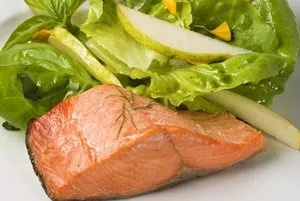
The Update on Children’s Health….
Protein Sports Supplements – are they any good?
With professional players weighing in at anything between 70kg and 140kg roughly it is clear that each player will have his own very individual needs when it comes to daily protein consumption. This means that a good sized prop (around 120kg) will need roughly 200g of protein in a day if he is training at an intense professional level. If you consider that a 100g chick breast contains roughly 20g of protein then the player would have to consume 10 chicken breasts in a day.
Now obviously players won’t just be consuming protein from chicken breasts all day everyday, there will be a variety of protein sources in their diet that will help to add up to the required daily dosage, however, as you can begin to imagine, eating just half of those 10 chicken breasts begins to get very expensive very quickly. This is where protein powders come in handy, they are a fast absorbing source of protein that cost significantly less than eating the required amount of protein from natural sources.
Do Protein Powders Actually Work?
So far I’ve already told you what you already know – protein is an essential component of our daily diets and as rugby players are generally a bit bigger and train a bit harder than the average person they require more protein in general. It is also fairly obvious that wherever possible it is preferable to consumer your daily protein requirements through natural foods such as good quality meats, dairy products and vegetable products.
The one area were protein shakes are a good source of nutrition is before or after a workout. Bracketing workouts with protein powder can prevent the body taking amino acids from our own muscle tissue during training and will also promote protein synthesis, key for muscle recovery and growth afterwards. The body requires a hit of protein immediately after a workout to help repair muscle tissue that is damaged during exercise.
It is therefore suggested that you consumer a dose of protein within 30 minutes of having completed a workout. Protein shakes are an ideal way of consuming a dose of protein immediately after having completed a workout to ensure you aid muscle growth. In addition protein powders are usually packed full of other useful nutrients to help aid muscle growth and repaid.
It is an oft held belief that carbs are bad and that protein is the essential component of muscle building. Whilst there may be some truth in this there is a requirement for a mix of complex carbohydrates and proteins after completing a workout in order to maximise muscle growth. The majority of protein powders are designed with this in mind and there fore contain the necessary complement of proteins and carbohydrates for post-workout consumption.
Some powders will also contain a mix of other nutritional products such as creatine which creates an all-in-one type product reducing the need to carry around multiple shakers to take different supplements. Again it is not the case that protein powders are a better alternative to real food, they may contain many of the necessary muscle building components but they do not contain all of the necessary macro and micro nutrients for a complete healthy diet.
So yes there is a benefit to using protein powders but it is nothing like what the sports nutrition companies would like to have you believe. We each require a specific amount of protein everyday, however the quantity will vary greatly depending on your size and your physical activity. Obviously very few of us will be training at the same intensity as a professional rugby player and therefore our requirement is likely to be nearer the 1.2g per kg of body weight than the 1.7g many rugby players will look to consume.
For the majority of people, it is possible to get their daily protein requirements from their standard diet assuming they are eating a range of high quality proteins such as eggs and grass fed beef. However, for some of us who requite a higher quantity of protein and aren’t able to invest in 10 chicken breasts a day protein powders are a viable alternative. They are especially important for consuming protein within the 30 minute window after a workout.
Are There Any Risks?
Although there are no specific risks associated with the consumption of protein powders, too much protein can be bad for your health. Excessive amounts of protein can lead to diarrhoea and beyond that, long-term over consumption can cause bone demineralisation and increase your risk of osteoporosis. So next time you see the scummy downing shake after shake hand him a pint and do his kidneys a favour.
What Types Of Powders Are There?
Whey protein is by far the most popular form of protein when consuming shakes. Whey isolate is filtered so that it is easily digested and therefore an ideal option for consuming after a workout to ensure you get a fast hit of protein. Cassein on the other hand is a much slower digesting protein and is therefore ideal for taking before bed to ensure the body has a constand source of protein whilst you sleep.
Recent studies show that while whey may kick-start anabolism, where the body repairs, it doesn’t prevent catabolism, where the body gets broken down, casein does this and research shows that this can be prevented by combining equal measures of the two for a sustained release post workout which improves recovery and growth. It is therefore important to research the exact type of protein required for your specific goals before making a purchase.
Even within the whey protein family their are different forms, whey concentrate is probably the cheapest way of consuming protein, however, whey isolate is slightly lower in fat whilst also being faster digesting so is potentially more relevant to backs who need to be as lean as possible whilst fuelling up for long cardio sessions. In addition there are also forms such as egg white and vegetable protein to be considered.
Take home message: sort the rest of your diet out first as you can get most of the requirements you need with a good meal plan!!
Why ‘golf fitness’ is not just for Tiger and Rory
If you follow any of the PGA and European tour golfers on social media you will have no doubt come across a snippet of their fitness regime. Today’s golfers are mobile, strong and powerful. It is no surprise that they are hitting that little white ball well over 300 yards! Yes, they have a little help from modern technology, but they are also ‘well oiled’ ball striking machines!
To be a top golfer you need to have your body performing at its best. Whether that is a player on a professional ticket or a casual Saturday morning club golfer. The professional golfer dedicates a lot of time to ensure that they can move through their particular swing pattern in the most efficient and safe way. You will have seen the videos of the pro’s squatting, deadlifting, chins using bands and balls and all sorts of apparatus for their training regime.
‘Golf fitness’ is not just important for the professionals, it is important for everyone who swings a club. Firstly, every golfer must be both mobile and stable. During your golf swing there are parts of your body that we want to stabilise, or to remain strong. For example we want the pelvis to remain stable while we rotate through the thoracic spine. There are parts of our body which we want to be mobile, such as the hip as we ‘turn our hips towards the target’.
Having the correct mobility/stability pattern is very important for not just optimising your golf swing but also in preventing injury. For example, if you have poor mobility through your hips and your thoracic spine, your pelvis and lumbar spine may sacrifice stability in order to achieve a greater range of motion. This is bound to lead to a lower back injury at some point. If you walk into the clubhouse after a round and you’re holding your lower back then this is you!
So, what can you do to optimise your swing pattern and help to prevent injury? The first step is to assess your body’s current movement capability to identify stability and mobility patterns. This will identify stability faults and mobility restrictions. We use the Titleist Performance Institute (TPI) physical screen, Matt is TPI certified. The physical screen is a very quick and easy 16 point assessment of your body’s limitations. It is very easy to perform and provides us with a host of information about our golfer.
The results of a screen will determine what stretches and exercises will be best suited for you that will help you to improve your movement pattern. These more often than not don’t involve the lifting of big heavy weights, but require mobilising and initiating the correct muscles and doing movements that will increase and encourage mobility.
The development of power in the golf swing is also important. However, without first addressing stability and mobility you will be heading into serious trouble with injury. Power is essentially your ability to generate club head speed with force. This requires a lot more than just a few mobility and strengthening exercises. I will save information on power for another day.
For now, focus on stability and mobility to enhance your movement patterns and ultimately improve your golf swing.
Matt
(Titleist Performance Institute Certified)

